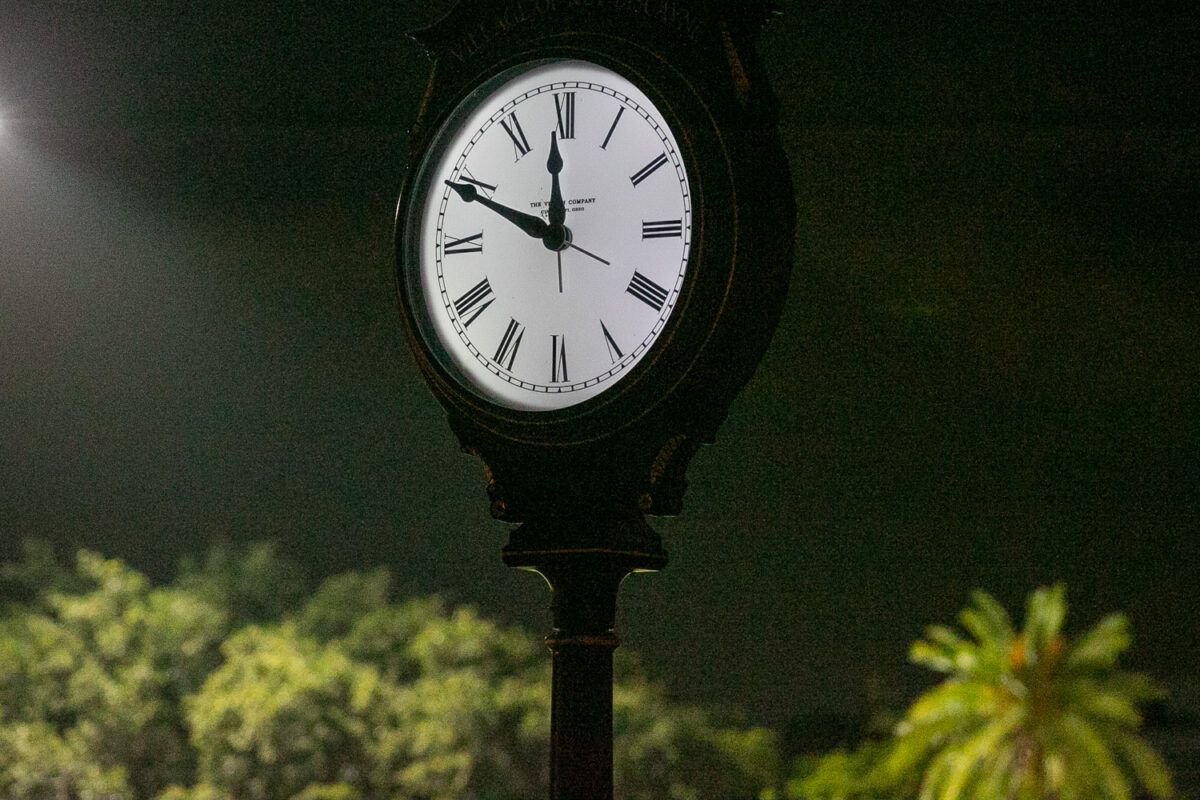You changed your clock this morning once again, and if you’re like many, you’re grumbling about it. Will the twice-annual clock switching ever change? And how did it even start?
There are competing movements. Evening sun lovers want permanent daylight saving time, and say it promotes recreation and family time.
But there is also a growing movement to simply stay on standard time, as was done in the past – and as Arizona and Hawaii have done for decades. Proponents of “natural time” are supported by sleep medicine experts, who say standard time better aligns with the human body’s internal clock.
Where did this all come from, though?
The tale of how we came to move the clock forward in the spring, and then push it back in the fall spans over more than a century — one that’s driven by two world wars, mass confusion at times and more recently, a human desire to bask in the sun for a long as possible.
There’s been plenty of debate over the practice, but about 70 countries — about 40% of those across the globe — currently use what Americans call daylight saving time.
While springing the clocks forward “kind of jolts our system,” the extra daylight gets people outdoors, exercising and having fun, says Anne Buckle, web editor at timeanddate.com, which features information on time, time zones and astronomy.
“The really, really awesome advantage is the bright evenings, right?” she says.
HOW DID THIS ALL GET STARTED?
In the 1890s, George Vernon Hudson, an astronomer and entomologist in New Zealand, proposed a time shift in the spring and fall to increase the daylight. And in the early 1900s, British home builder William Willett, troubled that people weren’t up enjoying the morning sunlight, made a similar push. But neither proposal gained enough traction to be implemented.
Germany began using daylight saving time during World War I with the thought that it would save energy. Other countries, including the United States, soon followed suit. During World War II, the U.S. once again instituted what was dubbed “war time” nationwide, this time year-round.
Around the world, Europe, much of Canada and part of Australia also implement it, while Russia and Asia don’t currently.
INCONSISTENCY AND MASS CONFUSION
After World War II, a patchwork of timekeeping emerged across the United States, with some areas keeping daylight saving time and others ditching it.
“You might have one town has daylight saving time, the neighboring town might have daylight saving time but start it and end it on different dates and the third neighboring town might not have it at all,” says David Prerau, author of the book “Seize the Daylight: The Curious and Contentious Story of Daylight Saving Time.”
At one point, if riders on a 35-mile bus ride from Steubenville, Ohio, to Moundsville, West Virginia, wanted their watches to be accurate, they’d need to change them seven times as they dipped in and out of daylight saving time, Prerau says.
So in 1966, the U.S. Congress passed the Uniform Time Act, which says states can either implement daylight saving time or not, but it has to be statewide. The act also mandates the day that daylight saving time starts and ends across the country.
Confusion over the time change isn’t just something from the past. In the nation of Lebanon last spring, chaos ensued when the government announced a last-minute decision to delay the start of daylight saving time by a month — until the end of the Muslim holy month of Ramadan. Some institutions made the change and others refused as citizens tried to piece together their schedules. Within days, the decision was reversed.
“It really turned into a huge mess where nobody knew what time it was,” Buckle says.
WHAT WOULD IT BE LIKE IF WE DIDN’T CHANGE THE CLOCKS?
Changing the clocks twice a year leads to a lot of grumbling, and pushes to either use standard time all year, or stick to daylight saving time all year often crop up.
During the 1970s energy crisis, the U.S. started doing daylight saving time all year long, and Americans didn’t like it. With the sun not rising in the winter in some areas till around 9 a.m. or even later, people were waking up in the dark, going to work in the dark and sending their children to school in the dark, Prerau says.
“It became very unpopular very quickly,” Prerau says.
Arguments for changing to permanent daylight saving time – such as those from Florida Sen. Marco Rubio — are usually based on the benefits of shifting daylight from mornings to evenings.
But standard time supporters say that desire ignores human biology and evolution.
“Standard time best aligns with the position of the sun, helping to synchronize the timing of our internal body clock with the natural environment,” said Dr. Karin Johnson, a professor of neurology at the UMass Chan Medical School. “This alignment is essential for the appropriate regulation of sleepiness, alertness, and other biological rhythms,” she said in a news release.
WILL THEY EVER DITCH THE SWITCH ?
Polls show that the idea of stopping clock changes is popular, but there’s no consensus on either permanent standard time or permanent daylight saving time. While every state can decide to stay on standard time, permanent daylight saving time requires a change to that 1966 law. Rubio succeeded in getting the Senate to make that change in 2022 – unanimously — but it died in the House.
At the state level, some states are considering sticking with standard time year-round. A coalition of western lawmakers in Oregon, Idaho, California, and Washington are pushing a regional pact so that all of those states could coordinate on permanent standard time. Oregon’s Senate passed the measure this year, but it died in the House.
Associated Press writer Jamie Stengle contributed to this story


